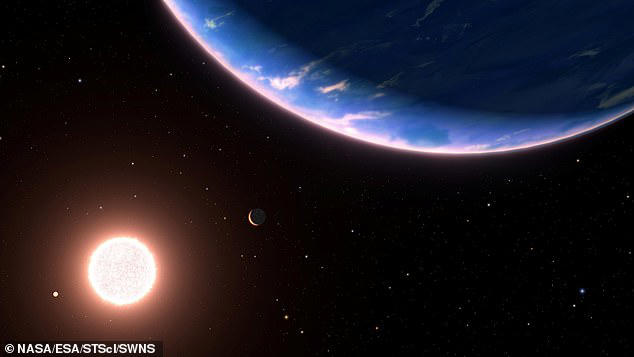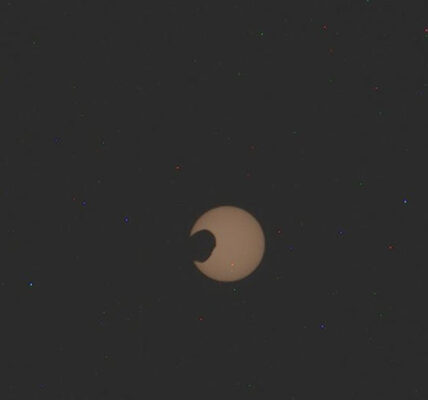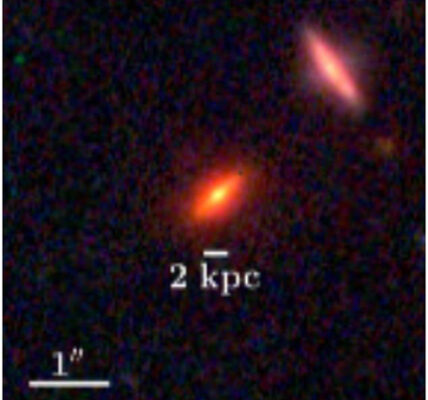Haze-Driven Climate on Pluto revealed by James Webb Telescope shows a unique weather system controlled by a high-altitude haze, unlike anything else in the solar system.

© NASA/JHUAPL/SwRI
Haze-Driven Climate on Pluto Stuns Scientists with Unique Weather System
The haze-driven climate on Pluto is turning heads in the astronomy world after new discoveries made by the James Webb Space Telescope (JWST). Far from being a cold, lifeless rock, Pluto has once again surprised scientists. It turns out that a thin, bluish haze floating high above the surface is not just pretty to look at — it actually controls the planet’s climate in a way that’s completely new to science.
This incredible insight adds to a growing list of reasons why Pluto is still one of the most fascinating objects in our solar system, despite being downgraded from full planet status in 2006.
A Strange Haze That Rules the Skies
During the flyby, scientists were amazed to see a glowing, multi-layered blue haze stretching more than 185 miles (about 300 kilometers) above Pluto’s surface.
At first, it was thought to be just an unusual atmospheric feature. But now, nearly a decade later, JWST has revealed that this haze actually plays a major role in shaping the climate on Pluto — something that’s never been seen on any other world.
What the Haze Is Made Of
The haze-driven climate on Pluto comes from the interaction of sunlight with the planet’s atmosphere, which is mainly made of nitrogen and methane. When ultraviolet light from the Sun hits these gases, it creates complex organic particles called tholins. These particles are what make up the haze.
Scientists had suspected since 2017 that these tiny haze particles could be influencing Pluto’s climate. The idea was that they absorb sunlight during the day and then release heat as infrared energy during the night. This would help cool the atmosphere far more efficiently than gases alone.
James Webb Confirms the Theory
For years, proving the existence of this haze-driven climate on Pluto was difficult. One big challenge was Pluto’s moon Charon, which orbits so close that their heat signals often get mixed together when viewed from Earth. But JWST’s high-precision infrared instruments finally solved that problem.
By observing in 2022, JWST was able to separate Pluto’s heat signature from Charon’s. The results matched exactly what scientists predicted years ago. The haze gives off just the kind of faint infrared glow they expected if it were cooling Pluto’s upper atmosphere.
Colder Than Expected
Because of this haze-driven climate on Pluto, the planet’s upper atmosphere is much colder than scientists once thought. It’s around -333°F (-203°C) — that’s about 30°F (17°C) colder than earlier models predicted.
This cooling effect is likely due to the haze particles releasing heat back into space. Instead of the gases doing most of the work, as they do on Earth and Mars, it’s these tiny solid particles that are driving Pluto’s climate.
Why This Is So Unique
The haze-driven climate on Pluto is unlike anything else we’ve seen in our solar system. According to lead researcher Tanguy Bertrand from the Paris Observatory, this kind of climate system doesn’t exist anywhere else.
Other planets and moons have atmospheres and hazes, but none show this exact behavior — where haze particles play a dominant role in regulating temperature. This makes Pluto not only interesting but also incredibly unique in terms of planetary science.
Could Other Worlds Be Similar?
This haze-driven climate on Pluto might not be entirely alone, though. Some scientists believe similar processes could be happening on other distant, hazy worlds. For example, Triton (a moon of Neptune) and Titan (a moon of Saturn) both have thick atmospheres and hazes that might also affect their climates in unusual ways.
By studying Pluto, scientists now have a better model to test against these other mysterious moons. This could help unlock secrets about how atmospheres work in the far reaches of our solar system.
A Glimpse Into Earth’s Past
Surprisingly, the haze-driven climate on Pluto might also teach us something about our own planet’s ancient history. Long before Earth had oxygen in its atmosphere, it may have been covered in a similar kind of haze — one made from organic particles just like on Pluto.
This early haze could have helped stabilize Earth’s temperatures and made it more suitable for life to form. So, in a strange way, studying a tiny frozen world billions of miles away could give us clues about how life began here on Earth.
Science in Action: Quick Confirmation
One of the most exciting parts of this discovery is how quickly it confirmed earlier predictions. When the idea of a haze-driven climate on Pluto was first proposed in 2017, scientists thought they might have to wait decades to prove it.
But just a few years later, JWST gave them the answers they needed. This shows how rapidly space science is progressing and how powerful new instruments like JWST have become.
Pluto: More Than Just a Dwarf Planet
The haze-driven climate on Pluto adds to the growing respect scientists have for this distant dwarf planet. It’s not just a frozen rock at the edge of the solar system — it’s a world with a complex, active atmosphere that challenges our understanding of how climates work.
As we continue to explore space, Pluto serves as a reminder that even the smallest worlds can hold the biggest surprises.
Related:
Mysterious Signals from Pulsating Star: 5 Stunning Revelations



